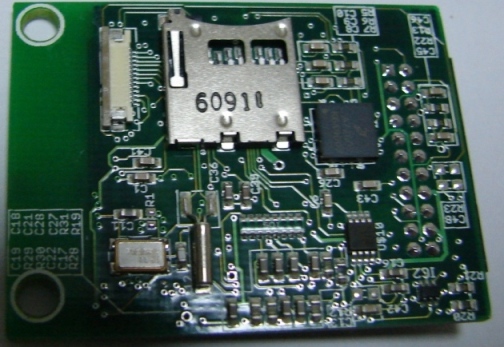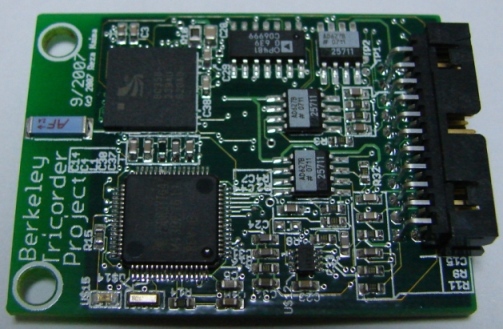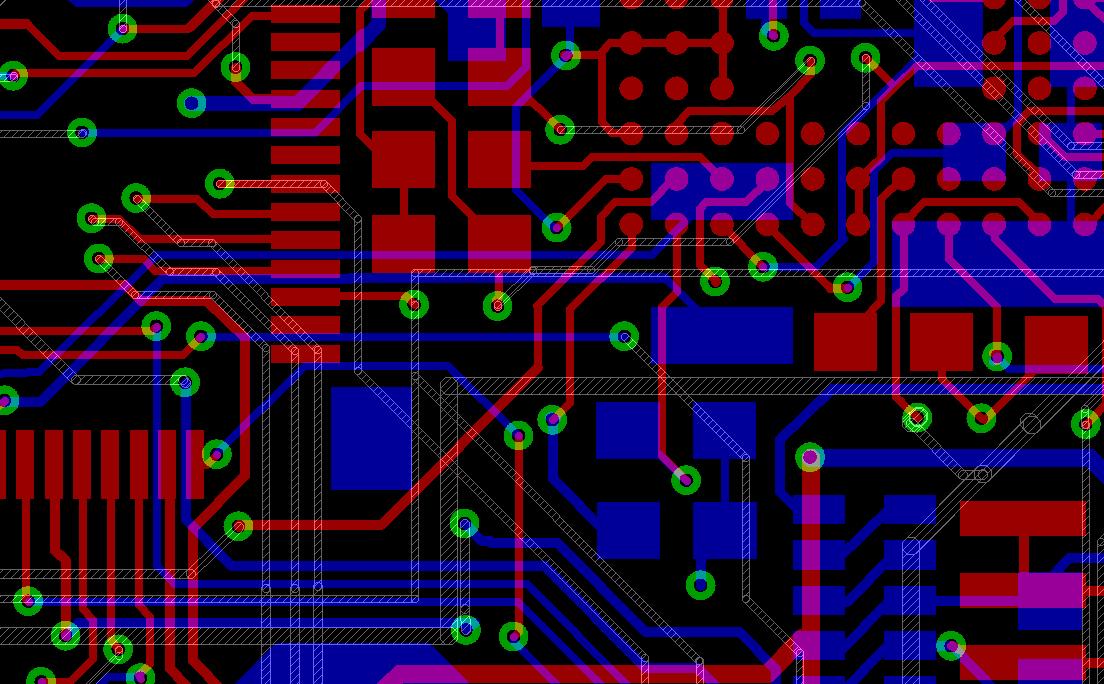My development environment for the CSR BlueCore IC (xIDE) stopped working – in particular, an application called vmbuilder.exe which is responsible for merging the CSR firmware with my application specific code would not generate an output file, nor would it print any debugging message.
After several days of uninstalling and reinstalling, I starting digging a bit deeper and found that the application would terminate at a different point in it’s execution each time it was run. Some (more like a lot) more debugging revealed that an application that was running on my computer, FixCamera.exe was responsible. It constantly pokes around different executables and files on the computer. For some reason, every time it would poke it’s nose into vmbuilder.exe, it would cause the application to die.
I have no idea what FixCamera.exe is for, and my webcam works fine without it. I did find one website that claims that it could be MalWare. Grr..
In any case, after more time than I would have liked, I’m up and running, and I’m able to stream data from the new tricorder.
Electronics, HealthMonitor
 A few bugfixes to my development tools, and I was able to connect to both the MSP430F1611 microcontroller and the CSR BlueTooth IC, and program both of them, which is great news! I’m including a photo of my development environment — it’s fairly compact, though it currently needs a parallel port to program the CSR IC. I’ve added support for a USB interface so I can move away from the parallel interface, but it’ll take a bit more work to get that part working. I still need to validate that the frontend is working as expected before I start messing around with the USB interface.
A few bugfixes to my development tools, and I was able to connect to both the MSP430F1611 microcontroller and the CSR BlueTooth IC, and program both of them, which is great news! I’m including a photo of my development environment — it’s fairly compact, though it currently needs a parallel port to program the CSR IC. I’ve added support for a USB interface so I can move away from the parallel interface, but it’ll take a bit more work to get that part working. I still need to validate that the frontend is working as expected before I start messing around with the USB interface.
HealthMonitor
It took a lot of time and hand-holding with the manufacturer, but the boards are finally done and are being shipped to us! I can’t wait to start testing them out!


HealthMonitor
 I’ve made some changes to the original programming interface and fixed a bug (schematic called for Male DB25, and I was using a Female).
I’ve made some changes to the original programming interface and fixed a bug (schematic called for Male DB25, and I was using a Female).
- The 14 pin connector on the left connects to the JTAG-FET MSP430 programmer.
- The 13-pin flex cable at the top connects to the Tricorder (formerly known as the HealthMonitor).
- The 25-pin DB25 connects to the parallel port for bit-banged SPI to program the CSR bluetooth IC.
- The two DB9 connectors each output one side of the communication between the MSP430 and the BlueTooth IC. That you you can look at the traffic going back and forth simultaneously. The problem with the original design was that it only listened to one side of the conversation, and was wired to drive the other side. This worked, but obviously made driver on the Tricorder unhappy. This way, we don’t drive anything, and listen to both signals.
HealthMonitor
 During my weekly meeting with my adviser (John), he brought up the issue of project name and suggested The Berkeley Tricorder Project. He was inspired by what several people said in blog comments in regards to the first demo I posted. Well, I love it, and now it’s the new official name of this project. I also got a confirmation email that the box full of components reached it’s destination in China and the new PCB will be manufactured and assembled over the next two weeks, then shipped back to us. The upgrades in this revision include :
During my weekly meeting with my adviser (John), he brought up the issue of project name and suggested The Berkeley Tricorder Project. He was inspired by what several people said in blog comments in regards to the first demo I posted. Well, I love it, and now it’s the new official name of this project. I also got a confirmation email that the box full of components reached it’s destination in China and the new PCB will be manufactured and assembled over the next two weeks, then shipped back to us. The upgrades in this revision include :
- Better input stage for ECG (2 stage with lower time constant)
- AC couping EMG input to avoid it saturating
- Moved GSR off EMG input and will multi-task it with the temperature probe.
- Addition of Pulse Oximeter.
- Addition of USB interface
- Addition of onboard voltage regulation with error detection
- Addition of status LED
- Additional multi-purpose inputs/outputs
Our hopes is to deploy this in the field and start collecting data. The inset image is of a portion of the latest PCB, all routed by hand.
Electronics, HealthMonitor
 After spending hours driving around, I finally found a store that had a decent selection of sewing machines, and picked one up. I had a bit of instruction from Sherry, an employee of “The store that sells sewing machines,” and had a go at making my harness. Let’s just say it’s ugly, but it should work for testing purposes. I’ll have a go at mounting the device, battery, conductive foam ecg electrodes and metal paired emg electrodes in the harness and trying to record data for an hour or so. I just hope my harness doesn’t come apart till I’m done with my first pass of testing. I do expect my second harness to be significantly better.
After spending hours driving around, I finally found a store that had a decent selection of sewing machines, and picked one up. I had a bit of instruction from Sherry, an employee of “The store that sells sewing machines,” and had a go at making my harness. Let’s just say it’s ugly, but it should work for testing purposes. I’ll have a go at mounting the device, battery, conductive foam ecg electrodes and metal paired emg electrodes in the harness and trying to record data for an hour or so. I just hope my harness doesn’t come apart till I’m done with my first pass of testing. I do expect my second harness to be significantly better.
HealthMonitor
 My initial test of some conductive foam pads was very successful, so much so that they seem to perform better than the Ag/AgCl electrodes I’ve been using. Having gotten the fabrics in, I now need to teach myself how to sew and figure out a way to mount the foam.
My initial test of some conductive foam pads was very successful, so much so that they seem to perform better than the Ag/AgCl electrodes I’ve been using. Having gotten the fabrics in, I now need to teach myself how to sew and figure out a way to mount the foam.
HealthMonitor
Another blog picked it up, Make:
And just under 8000 views on YouTube. I really am amazed at the interest this has generated. I wonder if it’ll last long.
HealthMonitor
I’m kinda impressed by finding my devices linked to by engadget .
HealthMonitor
I sent a link to the host of http://www.hackaday.com/ and he posted my video; as a result I’ve been getting a lot of good feedback a lot of different people. I love the still with Miranda in it that he chose for the screenshot.
HealthMonitor




 During my weekly meeting with my adviser (John), he brought up the issue of project name and suggested The Berkeley Tricorder Project. He was inspired by what several people said in blog comments in regards to the first demo I posted. Well, I love it, and now it’s the new official name of this project. I also got a confirmation email that the box full of components reached it’s destination in China and the new PCB will be manufactured and assembled over the next two weeks, then shipped back to us. The upgrades in this revision include :
During my weekly meeting with my adviser (John), he brought up the issue of project name and suggested The Berkeley Tricorder Project. He was inspired by what several people said in blog comments in regards to the first demo I posted. Well, I love it, and now it’s the new official name of this project. I also got a confirmation email that the box full of components reached it’s destination in China and the new PCB will be manufactured and assembled over the next two weeks, then shipped back to us. The upgrades in this revision include :

